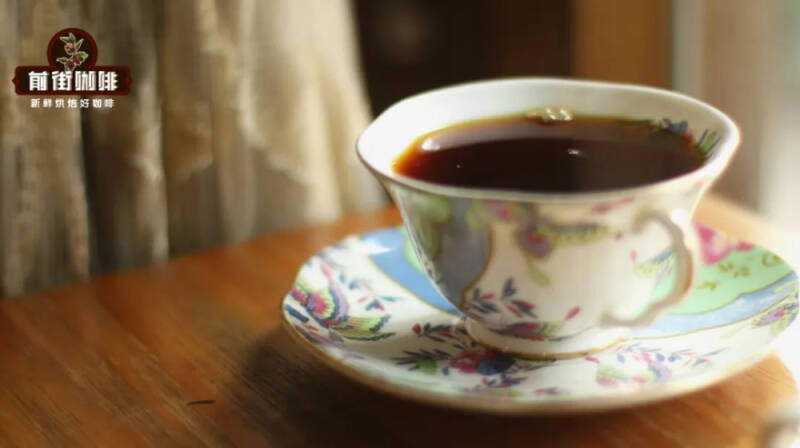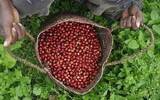Do you know all the details of these 9 coffee brews?

Under the patient explanation of the barista, thousands of thousands chose to buy a bag of coffee beans to go home, followed the brewing advice, and found that the coffee brewed out was very different from the coffee drunk in the store. You think about it, and you don't know what the problem is. This is most likely the result of ignoring a detail.
In fact, for newcomers who are just learning hand flushing, compared with gorgeous cooking skills or tricky extraction parameters, mastering details is the key to getting started successfully. If you encounter the above problems and are struggling with bad coffee, take a look at the details listed by novices on the front street that are most likely to be overlooked.

Detail 1: before the formal grinding of beans, there is no "washing and grinding" leading to the taste of coffee.
No matter whether you use a hand grinder or an electric grinder, every time you grind the coffee, the cutter head will more or less stick to it. Many friends do not have the habit of dismantling and washing, and the frequency of use is not high, so the fine powder accumulated in the gap will oxidize and deteriorate with storage time, resulting in wood or fuel consumption smell.
In order to prevent the old powder left on the knife head from being brought to the new powder, leading to the smell of coffee, Qianjie will throw a few grains into the bean warehouse before formal grinding. In addition, in order to make a bean grinder have a longer service life, you should develop a good habit of cleaning after using it every day.
Detail 2: wet filter paper does not stick to the filter cup
Wetting filter paper is a default action that many people do before cooking, first of all, to make the filter paper "close" to the filter cup, and secondly to preheat both the filter cup and the pot. Some new friends only know how to "wet" the filter paper with water, but ignore the importance of fitting.
Qianjie has done a comparative experiment, if the filter paper is not fitted, the exhaust of coffee powder will be hindered during steaming, and the design of some filter cup walls will lose its auxiliary function (for example, the spiral diversion ribs of V60, the smooth surface of kono), then the uniformity of coffee extraction and the speed of launching will also be affected. About the filter paper fitting method, you can refer to here.
Detail 3: after pouring powder, pat the filter cup too many times.
I believe we all know that the powder layer is uneven, which can easily lead to uneven contact with water, so after we pour the coffee powder, we will gently pat or shake the filter cup to make the powder layer surface smooth. But you should know that too much or too many times of slapping will cause a large number of small fine powders to fall from the gap to the bottom. At this time, the upper layer of powder will become loose, while the lower layer will be compacted, hot water is difficult to penetrate, resulting in the problem of blockage at the end of the cooking section.
Powder is also skillful, we can first aim at the center point, slowly pour out the coffee powder, so that it is not easy to lean to one side, as long as gently shake the particles can be evenly distributed at the bottom of the filter cup.
Detail 4: the inspection work before water injection is not in place.
Qianjie has at least made thousands of pots of coffee, all kinds of parameters are well known, but occasionally make some low-level mistakes, so in order to avoid irreparable situations, pre-injection inspection is very important. First of all, please check whether the water that just washed the filter paper into the sharing pot has been poured and whether there is enough water in the kettle. After the coffee powder is ground, the electronic scale is returned to zero and then poured in to reconfirm the gram weight in order to prevent the bean grinder from "eating flour".
Detail 5: confirm the water temperature early, but don't start for a long time.
This is a problem that many stay-at-home friends will ignore, and it is also the most common problem for beginners. They are used to confirming the water temperature first, putting on the lid and then doing something else. In fact, when the water is really injected, the temperature has already dropped, so Qianjie suggests that the confirmation of water temperature should be carried out in the last two steps. If you use this kind of non-temperature-controlled injection kettle, you can consider its endothermic effect, choose hot water several degrees higher than the boiling temperature, then wait for it to slowly drop to the target temperature, and then start injecting water immediately.
Detail 6: when steaming, some coffee powder is not wet.
Coffee powder twice the amount of water to wait for 30 seconds, we all know a steaming formula, but in fact, it also has a premise, that is, to ensure that the coffee powder is completely soaked and can discharge gas at the same time. If you only pay attention to the amount and time of steaming, and you are not very adept at controlling the flow, it is easy to get dry on one side of the powder layer and wet on the other. According to the previous experience of hand flushing in the street, if it is impossible to pour all the powder into place in twice the water, then you might as well "misappropriate" the amount of water at the back of the section (5g / 10g) in order to pursue a better steaming effect.
Detail 7: the cooking parameters are not strictly executed.
Before brewing a type of coffee, we will make a corresponding brewing plan, including powder quantity, water quantity, temperature, grinding degree, water temperature, water injection distribution and other parameters, which can only be brewed strictly according to the original value, and finally, if the coffee tastes wrong, can be adjusted on the original extraction framework during review.
Just imagine, if you use the powder-water ratio at 1:15, but 15 grams of coffee powder is injected with a total of 238 grams of hot water, and then the coffee liquid is not finished, and you think the end section will be bitter, you hurriedly withdraw the filter cup, and finally coordinate the concentration through "rehydration". Then the actual powder-to-water ratio is not 1:15, and the taste of coffee can only be "resigned to fate" and cannot be used as an effective reference for extraction.
Detail 8: only staring at the electronic scale, ignoring the change of powder bed
Many beginners have a bad habit of staring at the data on the electronic scale all the time when injecting water. For coffee extraction, the accuracy of the value is important, but if you put too much energy on the data, you will often miss the change of the powder layer. For example, for a shallow baked bean, fine grinding slows down the speed of launching. When you focus too much on gram weight and time, and the liquid level continues to rise and spread over the powder layer, the water will slip away directly along the guide bone, resulting in insufficient extraction. Therefore, more attention should be paid to the change of powder bed in the process of water injection.
Detail 9: drink the coffee without shaking it.
In general, the flavor substances extracted by different stages of coffee are different, and the taste is from strong to light. So if you don't want to have a mouthful of strong, light coffee, you need to shake it manually to make it fully integrated and then taste better.
Mastering these details may not immediately make the coffee taste ten times better, but if you do them well, you can eliminate all kinds of unstable factors from the source and more intuitively find out the reasons why the coffee is not tasty, such as grinding, water temperature, or the proportion of powder and water, water injection methods, and so on.
-END-
Front Street Cafe
No. 10 Baoqian street, Yandun road, Dongshankou, Yuexiu district, Guangzhou, Guangdong province
Important Notice :
前街咖啡 FrontStreet Coffee has moved to new addredd:
FrontStreet Coffee Address: 315,Donghua East Road,GuangZhou
Tel:020 38364473
- Prev

Kenya has invested 6 billion dollars to support coffee cultivation, hoping to increase production and work with the Rainforest Alliance to certify compliance with EU regulations.
Currently, Kenya produces 51000 metric tons of coffee a year, but the Kenyan government hopes to increase production through a number of strategic measures. It is hoped that an increase of 49000 metric tons in coffee production will meet global coffee demand and increase the country's international influence and economic strength. Recently, the Kenyan government
- Next

"which award-winning coffee shops are more likely to disappoint?"
Coffee Culture Magazine Coffee Workshop for coffee lovers, there are various reasons to go to a coffee shop. Some people want to go to a store to try new products, while others want to discuss and communicate with baristas. In the long run, they have their own good heart and their own treasure coffee shop. Some time ago, there was a coffee lover.
Related
- Customers have "changed" Manner's new products! Shop assistant: Please don't mess around!
- Remove sockets in customer areas at Starbucks stores?! Netizen: I won't go if I really tear it down
- What is the difference between the taste steps of sun-dried coffee and washed coffee? Why is sun-cured coffee sweeter and washed coffee sour?
- The recipe for salty grapefruit dirty is revealed! Coffee Festival salty grapefruit dirty coffee making materials parameters ratio milk share!
- How about the flavor of Sunlight 74158 at Sidamo Banshaha Mathieu Processing Factory in Ethiopia? 74158 Share the proportion of coffee brewing parameters!
- What effect does Italian American coffee with filter paper have? Will coffee taste better if it is put on filter paper at the bottom of the powder bowl?
- What is the color difference in coffee beans? What are the characteristics of honey processed coffee beans? Why are the anaerobically treated coffee beans uneven in color?
- How does novice Xiaobai quickly get started and make coffee? Newbies learn to make coffee by hand and share the specific steps and process process!
- Costa tea has a shelf life of 100 years?! Expert: Unable to verify
- It's a huge uproar! American milk addition was rejected by Manner employees?!

